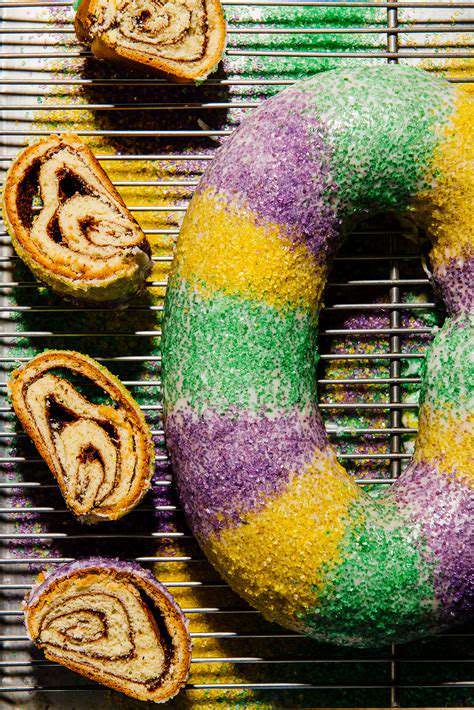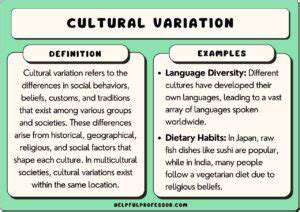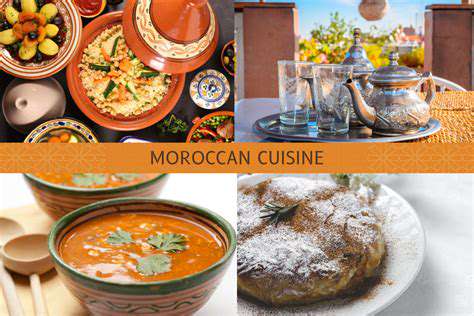Traditional Foods for Mardi Gras
King Cake
The iconic King Cake, a rich brioche-style pastry, is a quintessential Mardi Gras treat. Its sweet, subtly spiced flavor and the inclusion of a small plastic baby hidden inside make it a delightful and playful symbol of the celebration. This tradition, deeply rooted in the celebration's history, offers a delightful taste experience that embodies the spirit of Mardi Gras, from its origins in the French-speaking Caribbean to its widespread popularity across the United States and beyond.
Muffuletta
The Muffuletta, a massive sandwich overflowing with various meats, cheeses, olives, and other savory ingredients, is a staple of New Orleans cuisine and a favorite amongst Mardi Gras revelers. Its substantial size and diverse flavors showcase the city's rich culinary heritage and the spirit of sharing and abundance that are central to the Mardi Gras festivities. This hearty and flavorful sandwich is a perfect accompaniment to the vibrant atmosphere of the celebration.
Beignets
Crispy, golden-brown beignets, served with a dusting of powdered sugar, are a sweet treat that perfectly complements the festive spirit of Mardi Gras. These light and airy pastries, often enjoyed with a steaming cup of hot coffee or chicory, represent the delicious culmination of a culinary tradition that has delighted generations. Their simple yet satisfying nature makes them an essential part of the Mardi Gras experience, a perfect example of the celebration's focus on both indulgence and community.
Crawfish Étouffée
For those seeking a heartier, more savory experience, crawfish étouffée is a must-try. This rich and flavorful dish, simmered to perfection, features succulent crawfish in a decadent sauce, often incorporating tomatoes, onions, and spices. Crawfish étouffée embodies the spirit of Mardi Gras by offering a taste of Louisiana's culinary heritage. Its rich, savory flavor and substantial portions make it a perfect dish to enjoy during the revelry and festivities.
Pralines
A delightful and sweet treat, pralines are a must-have for any Mardi Gras celebration. These crunchy, nutty candies, often infused with the rich flavor of pecans or other nuts, offer a delightful counterpoint to the savory dishes. Their sweet and satisfying flavor perfectly encapsulates the spirit of Mardi Gras, providing a delicious and memorable end to any meal or snack. The rich and intensely flavored pralines are a fitting complement to the festivities and exemplify the celebration's focus on enjoying delicious food.

The Role of Gumbo and Other Creole Specialties in Mardi Gras Celebrations
Gumbo's Historical Significance
Gumbo, a rich and flavorful stew, holds a deeply rooted place in Louisiana's culinary heritage. Its origins are a fascinating tapestry woven from the cultural influences of the French, Spanish, and African peoples who shaped the region. The early versions of gumbo, often featuring okra and various meats, were practical dishes, utilizing ingredients readily available and reflecting the needs of the communities that developed them. This practicality, coupled with the dedication to flavor and texture, has made gumbo a cherished staple, not just in Louisiana, but across the United States.
Beyond Gumbo: A Spectrum of Creole Specialties
Mardi Gras celebrations extend far beyond gumbo. A rich tapestry of Creole specialties, including jambalaya, red beans and rice, and po'boys, contribute to the vibrant culinary experience. Each dish tells a story, reflecting the unique blend of cultures that define Louisiana's identity. These dishes are more than just food; they are a representation of the region's history and its people.
Mardi Gras as a Culinary Showcase
Mardi Gras is a time for revelry, celebration, and, of course, feasting. The vibrant atmosphere is further enhanced by the abundance of Creole cuisine. The aroma of sizzling meats, the sizzle of spices, and the vibrant colors of the dishes create a sensory experience that is integral to the festivities. Restaurants across the region prepare special menus, catering to the increased demand during this period, showcasing the culinary prowess of Louisiana chefs.
The Symbolic Value of Creole Dishes
Creole dishes often carry symbolic weight in the context of Mardi Gras. The hearty nature of the food represents the resilience and strength of the people of Louisiana. Sharing these meals fosters a sense of community and shared experience, bringing people together in a celebration of culture and tradition. The unique flavors are a testament to the rich history of the region, making these dishes more than just food; they are part of the cultural fabric.
Gumbo and Jambalaya: A Taste of Tradition
Gumbo and jambalaya, two iconic Creole dishes, are often served at Mardi Gras celebrations. Gumbo's rich broth and diverse ingredients highlight the region's cultural fusion. Jambalaya, a hearty rice dish featuring meats and vegetables, provides a more robust and flavorful experience. These dishes, prepared with care and love, are essential to the vibrant culinary landscape of Mardi Gras.
The Role of Food in Mardi Gras Parades
The parades themselves are not just a visual spectacle; they're a display of the region's culture, and food plays a crucial part. Food vendors, often part of the parade route, offer a variety of Creole specialties, allowing attendees to sample the region's culinary delights. The aroma of freshly prepared dishes mingles with the sounds of music and the excitement of the crowd, creating an unforgettable atmosphere. This integration of food into the celebrations reinforces the importance of tradition and community within the Mardi Gras experience.
Understanding plot structure is crucial for crafting a compelling narrative. A well-structured plot, whether following a classic three-act structure or a more unconventional approach, provides a roadmap for the reader, guiding them through the rising action, climax, and resolution. Effective pacing keeps the reader engaged, ensuring that the tension builds gradually and that critical moments hold the necessary impact. A rushed plot can feel disjointed, while a plodding one can lose the reader's interest.
The Importance of King Cake and Its Symbolic Significance
King Cake Origins and History
King Cake, a rich and flavorful treat, holds a fascinating history rooted in ancient traditions. Its origins can be traced back to the medieval period, where elaborate pastries were often associated with celebrations and religious festivals. Early versions of the cake were likely simpler, but over time, the tradition evolved, incorporating elements of different cultures and evolving into the iconic treat we know today. The addition of the small figurine, often representing the baby Jesus, further imbued the cake with symbolic meaning, reflecting the celebration of the arrival of the Christ child.
Symbolic Representations in King Cake
The small figurine hidden within the King Cake is more than just a surprise; it represents the baby Jesus. This symbolic inclusion connects the cake to the Christian celebration of the Epiphany, a time when the wise men are said to have found the infant Jesus. The intricate decorations and flavors of the cake, often associated with royalty and celebration, further enhance the festive atmosphere.
Beyond the religious symbolism, the King Cake also embodies the concept of luck and good fortune. Finding the figurine within a slice of the cake is believed to bring good luck to the recipient, reflecting the hopeful and celebratory spirit of the season.
King Cake Variations Across Cultures
While the core concept of King Cake remains consistent, variations exist across different cultures and regions. Different countries and communities may add unique ingredients and flavors to the cake, reflecting local culinary traditions. The frosting, icing, and even the type of filling can vary, demonstrating the flexibility and adaptability of the recipe throughout history. These variations highlight the cultural richness and diversity associated with the tradition.
Some variations might include different types of fruit fillings or even incorporate elements specific to the local region's cuisine. These adjustments showcase the remarkable adaptability of the King Cake recipe as it has traveled and evolved over centuries.
King Cake's Role in Modern Celebrations
King Cake remains a popular and cherished tradition, especially during Mardi Gras celebrations in certain parts of the United States. It's a delicious way to celebrate the season, bringing communities together to share in the festivities. The cake's presence in modern celebrations underscores its enduring appeal and its ability to connect people through shared experiences. The anticipation of finding the figurine and the joy it brings to the recipient are key elements in maintaining the cake's popularity in modern times. The cake serves as a symbol of community, good cheer, and the spirit of the season.
The Evolution of Mardi Gras Food Traditions Through Time

The Rise of King Cake
King Cake, a quintessential Mardi Gras treat, has a fascinating history, evolving from humble beginnings to a beloved tradition. Its origins trace back to medieval European celebrations, where sweet cakes were baked and distributed, often with a small figurine hidden inside. This tradition, carrying the symbolism of royalty and good fortune, eventually found its way to New Orleans, where it became uniquely intertwined with Mardi Gras festivities. The addition of the small figurine, often representing the baby Jesus, further solidified its connection to the celebration's religious roots. The modern version of King Cake, with its intricate icing and varied fillings, represents a delicious testament to the enduring appeal of this symbolic treat.
The development of King Cake, as we know it today, is a result of the blending of French and Spanish culinary traditions. Early versions likely incorporated elements of both cultures, creating a unique and flavorful experience. Over time, the cake's recipe evolved, incorporating ingredients readily available in the region. This evolution reflects the adaptation and fusion of culinary traditions inherent in the development of many cultural dishes. This adaptation is a hallmark of New Orleans' unique culinary identity.
Beyond the King Cake: Other Culinary Delights
Mardi Gras is not just about King Cake; a plethora of other delectable dishes contribute to the vibrant culinary landscape of the celebration. From the rich flavors of gumbo to the savory delights of jambalaya, the festival offers a culinary journey through the heart of Louisiana cuisine. These dishes, passed down through generations, reflect the region's unique blend of French, Spanish, African, and American influences.
Beyond the staples, the festival offers a wide array of treats, from beignets and pralines to muffuletta sandwiches. These diverse culinary offerings reflect the vibrant mix of cultures that have shaped New Orleans' identity. Each dish tells a story, reflecting the city's rich history and the creativity of its people. The sheer variety of foods available during Mardi Gras underscores the festival's commitment to embracing and celebrating the city's diverse culinary heritage.
The Modern Mardi Gras Food Scene
Today, the Mardi Gras food scene is a dynamic and evolving landscape. Modern chefs are incorporating innovative techniques and ingredients into traditional recipes, creating exciting new twists on classic dishes. This fusion of tradition and innovation is showcased in the many restaurants and food stalls that pop up during Mardi Gras, presenting a diverse range of experiences for attendees. This vibrant energy is further fueled by the growing interest in authentic Louisiana cuisine, both locally and internationally.
The increasing popularity of Mardi Gras has led to a surge in food vendors and restaurants catering to the crowds. This has resulted in a wider array of options for participants, from traditional fare to contemporary interpretations of classic dishes. The accessibility of these culinary experiences is a key factor in the continued appeal of Mardi Gras.
Read more about Traditional Foods for Mardi Gras
Hot Recommendations
- Traditional Foods for Day of the Dead
- Food Etiquette in Italy: Pasta Rules!
- Best Family Friendly Restaurants with Play Areas in [City]
- Review: The Best [Specific Dessert] Place in [City]
- Top Ice Cream Parlors in [City]
- Traditional Foods for Halloween
- The History of the Potato in Ireland
- Best Vegan Pizza Joints in [City] [2025]
- Best Bakeries for Sourdough Bread in [City]
- Food Culture in Argentina: Asado and Wine
![Review: [Specific Wine Bar Name] with Food Pairing](/static/images/28/2025-05/FinalThoughts3AAMust-VisitforWineEnthusiastsandFoodies.jpg)

![Healthy Eating for Athletes [Fueling Your Body]](/static/images/28/2025-05/BeyondtheDiet3ALifestyleFactorsforAthleticSuccess.jpg)








![Review: The Most Unique Dining Experience in [City]](/static/images/28/2025-07/BeyondthePlate3AAMulti-SensoryExperience.jpg)